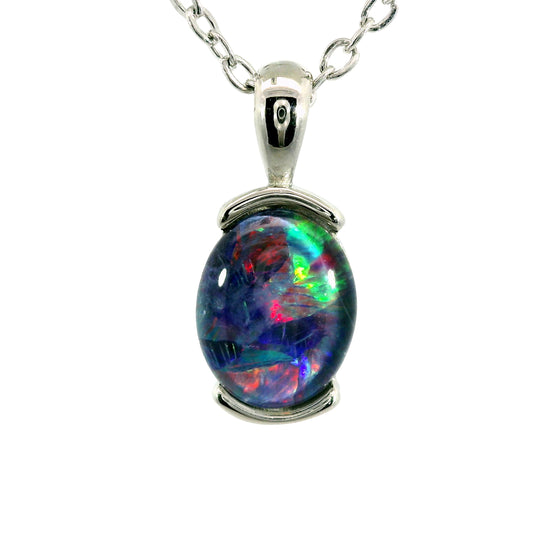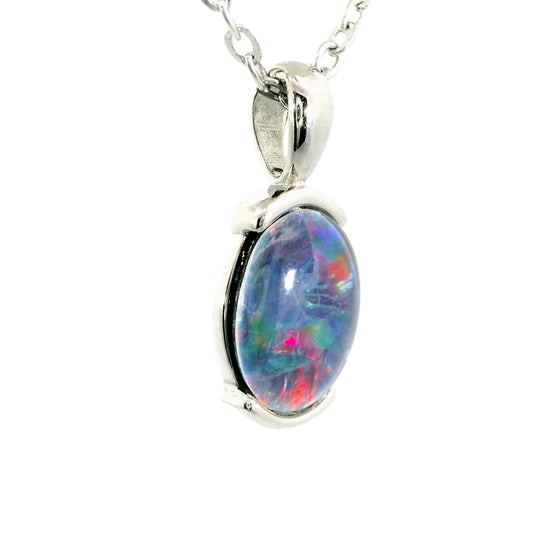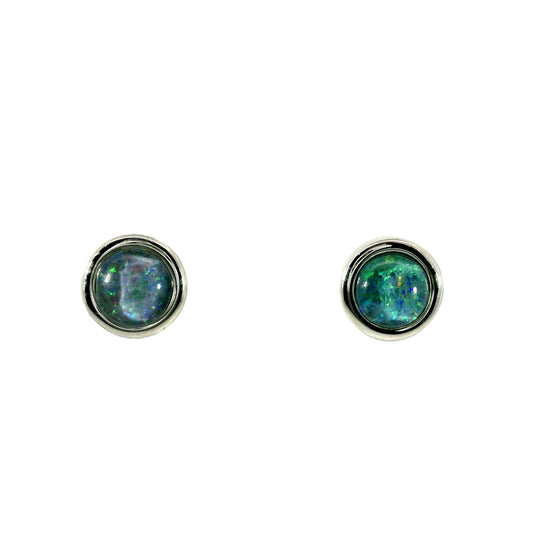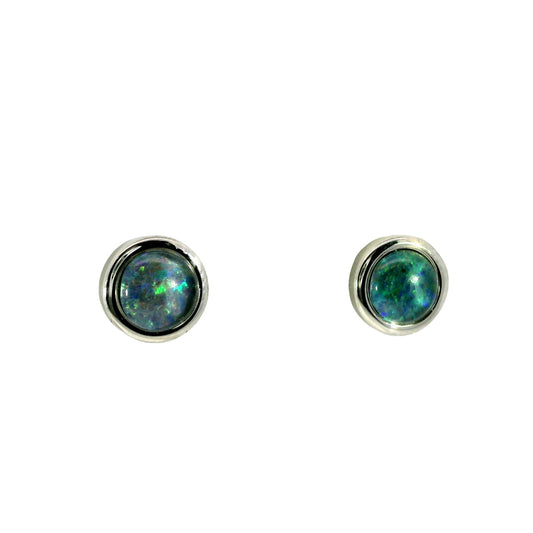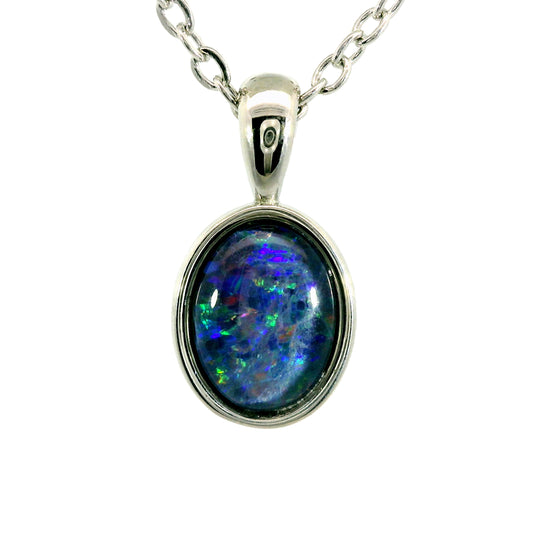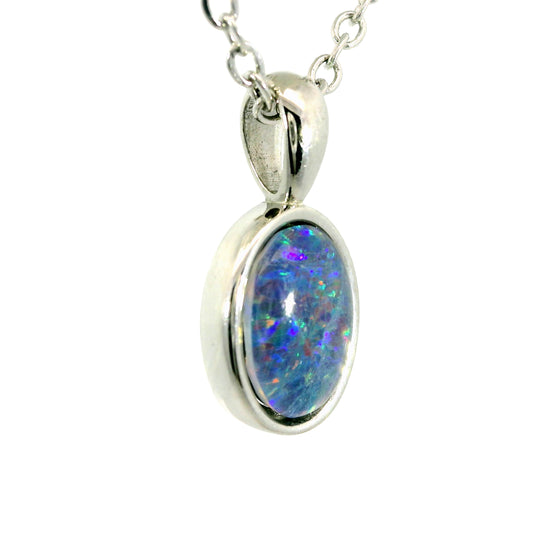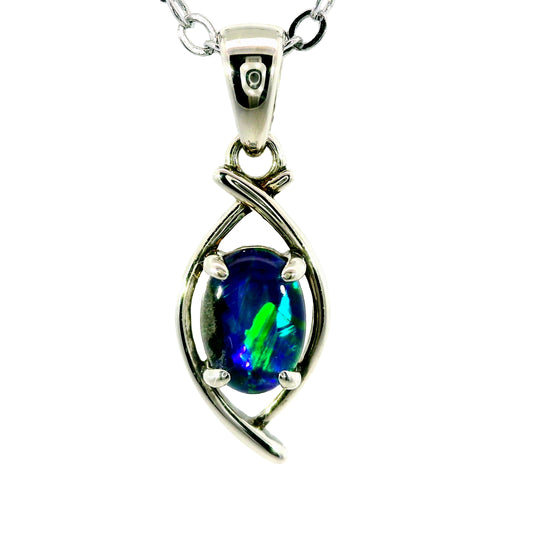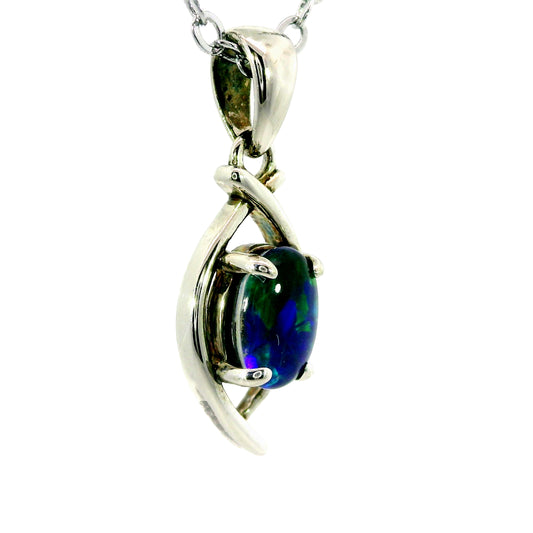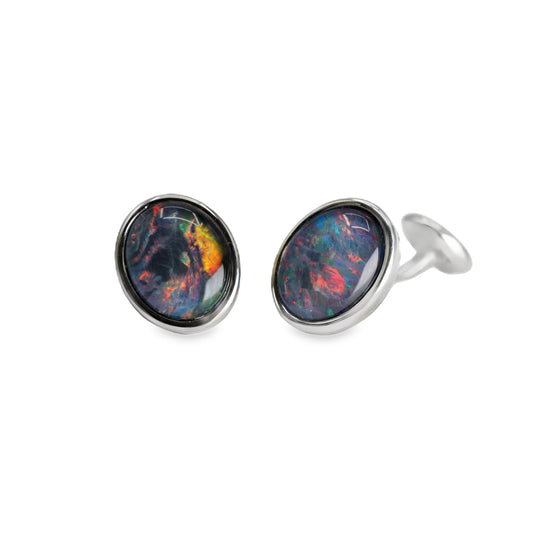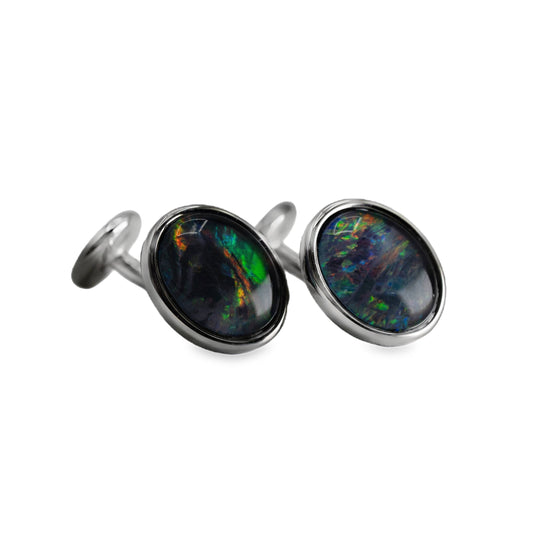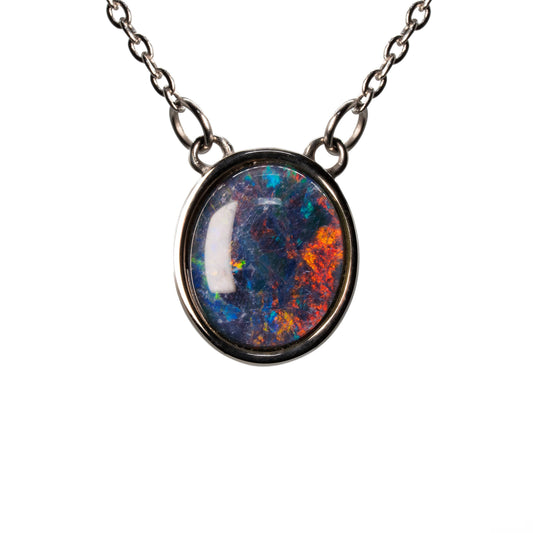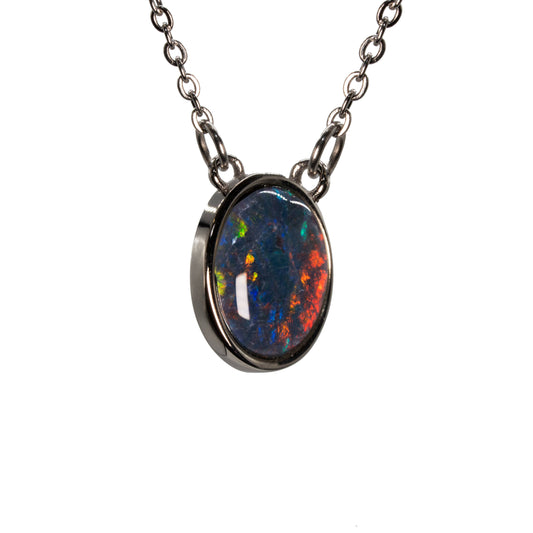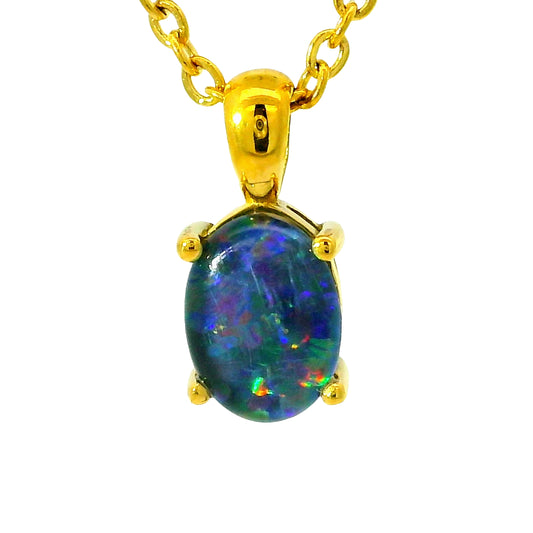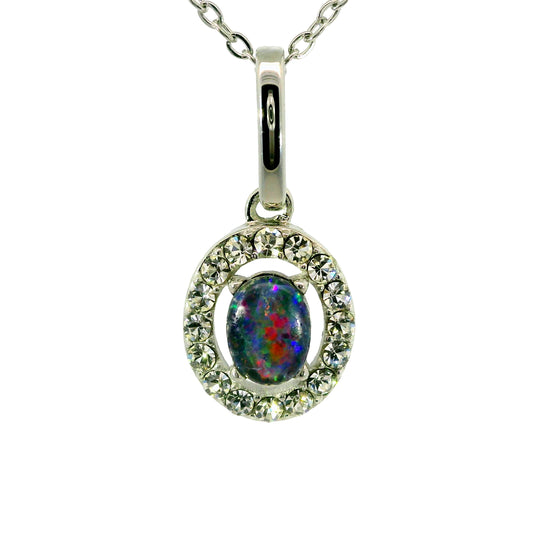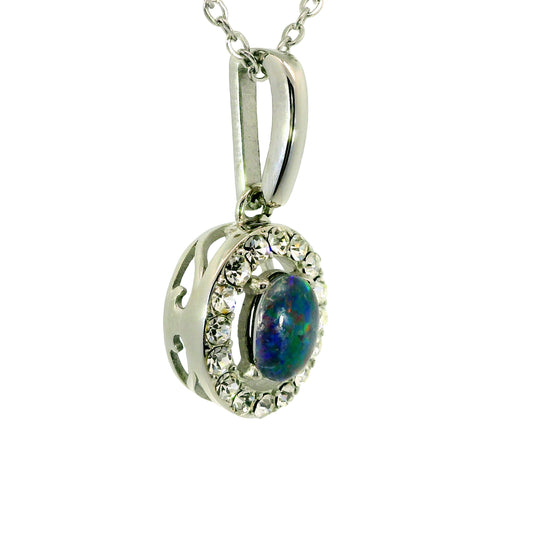The Layers of Triplets - All You Need to Know
Australian opals are cherished for their vibrant colours and unique patterns. But these dazzling displays are often accompanied by a hefty price tag. Luckily, innovations in opal crafting have allowed for alternative options, whilst still maintaining the allure of natural opal.
 The techniques behind doublets and triplets have been around for centuries, yet they still remain misunderstood to this day. Unsavoury practices and deliberate mis-marketing have led to widespread misconceptions that ultimately tarnish this otherwise beneficial technique.
The techniques behind doublets and triplets have been around for centuries, yet they still remain misunderstood to this day. Unsavoury practices and deliberate mis-marketing have led to widespread misconceptions that ultimately tarnish this otherwise beneficial technique.
Today, we will be looking into the layers of doublets and triplets, and exposing them for what they truly are: a mechanism that allows for vibrant colour, without compromising on quality (or your budget).
What are Doublets and Triplets?
 Put simply, the term 'doublet' or 'triplet' is one that refers to a process of layering. Popularised in the 1960s, jewellers would take a stunning yet thin layer of natural opal and adhere a durable backing of potch or ironstone. Later additions of a quartz cap allowed for both an enhanced appearance and durability.
Put simply, the term 'doublet' or 'triplet' is one that refers to a process of layering. Popularised in the 1960s, jewellers would take a stunning yet thin layer of natural opal and adhere a durable backing of potch or ironstone. Later additions of a quartz cap allowed for both an enhanced appearance and durability.
Unfortunately, with this innovation came the emergence of unscrupulous practices. Some jewellers began to use plastic as a backing for their Triplet opal jewellery, ultimately resulting in the pieces' falling apart' over time as the two different materials reacted and shifted at different paces, causing delamination (a process where the layers separate, resulting in a cloudy appearance).
The fact is as follows: opal triplets and doublets are genuine, but not all sellers may be honest. The issue with these practices is not the opal itself, but jewellers who may not advertise that the opal is a doublet or triplet. The reason this is so important to see is that, without proper knowledge, customers may buy an opal under false pretences, thinking that their purchase is a solid opal when it is actually a triplet or synthetic piece (fake opal). Fundamentally, this has negative impacts on the fostering of trust between customers and wholesalers, which is something that can not easily be repaired.
Preventing Delamination
Because we provide quality composition, we can guarantee our products for life against delamination. This is the process where (in inferior products) the layers of a triplet can be affected when they come into contact with water. Water can affect the glue, dissolving the layers and causing the opal to turn "white".
In these situations, it is not actually the opal turning white but the glue being affected by water and dissolving! Using silica-based glues and materials with the same coefficients of expansion (ie, not plastic), we ensure that the layers will not "work apart" over time.
If a manufacturer puts plastic or other cheap material on the back of a triplet (and sadly, people have done this), the jewellery will eventually undergo a process of delamination.
This is due to the rates in which opal and plastic heat and cool. If elements used are not compatible (for example, the glue is not silica-based), then it will also have a different rate of expansion and contraction to the layers, causing the piece to 'fall apart' over time.
Allowing moisture to attack and settle within the layers of the triplet subsequently affects the colour, value, integrity and appeal of the opal itself. This is because plastic has different coefficients of expansion than opal, meaning that it will expand and contract at a vastly different rate than that of opal, ultimately resulting in the aforementioned delamination.
Doublets vs Triplets - What's the Difference?
Opal Doublets
 A doublet is a thin layer of crystal opal with a layer of 'potch' (black common opal) or ironstone on the back, which acts to bring out the colour of the opal.
A doublet is a thin layer of crystal opal with a layer of 'potch' (black common opal) or ironstone on the back, which acts to bring out the colour of the opal.
Opal doublets use material with the same 'codelamination expansion'. This means that the layers will expand with heat and contract with cold. This is a 'fail-safe' against de-lamination. The colour display of our opal triplets and our opal doublets is determined by the quality of the rough opal used to make them.
The search for suitable rough opal is ongoing, and it is always a challenge to find the top gem quality to produce the stunning colour and pattern found in our 'A' grade opal doublets and triplets.

Opal Triplets
 An opal triplet is a doublet with a crystal quartz cap on the top (which acts to magnify and enhance the colour of the opal), giving it a strong and protective 'cap'. The lifetime guarantee applies to our opal triplets because they have three silicates with identical coefficients of expansion, so they will not delaminate.
An opal triplet is a doublet with a crystal quartz cap on the top (which acts to magnify and enhance the colour of the opal), giving it a strong and protective 'cap'. The lifetime guarantee applies to our opal triplets because they have three silicates with identical coefficients of expansion, so they will not delaminate.
The domed quartz crystal cap has a higher 'refractive index rating' which makes the triplet look incredible yet costs less than 1/30th the price of a solid black opal of the same size and colour.

An Inside Look into Triplet Creation
Not all opal is suitable to be cut into doublets or triplets. In fact, only some opal fields will be suitable for these kinds of projects. This means that any opal sourced must be carefully picked.

The rough opal is then prepared for slicing by removing the excess potch (a name given to colourless opal) on a diamond lapping wheel. Such opal then must be prepared for slicing; this 'preparation' encompasses a broad range of procedures, that differ depending on the size and shape of the natural opal.
After the opal is prepared, they are then mounted onto a 'block' that fits onto the slicing machine. This then allows for the opals to be sliced into thin pieces using this machine. The grey abrasive compound, which works with a blade made up of multiple thinly-spaced parallel blades, is used to 'cut' the opal. Once done, these slices come out of the machine and are ready to be blackened on one side and mounted onto a glass backing.
Surface 'cabochons' made of glass or crystal are then carefully bonded onto the sliced opals. They are custom-made according to the size, shape, and quality of the opal's colour. All of this must be taken into account to get the best out of this opal. The triplets are then carefully cut out of the glass slides, where excess glass and potch are discarded.
The triplets are then glued onto 'dop sticks', allowing excess glass found around the cabochons to be removed and shaped on a diamond wheel. This allows for the edges to be cohesive, especially after being finished on the 'finishing wheel'.
Once all of this has been completed, the finished triplets are removed from the 'dop sticks' and then sorted based on size. These pieces must then be graded according to colour, quality, and clarity before being used in jewellery.
Quality you can Trust
Our expertly crafted opal triplets and doublets highlight the stunning colours and brilliance of opals, making high-quality opal jewellery accessible to everyone. Each piece in our collection is designed to enhance the natural splendour of opals, offering durability and vibrant hues at a fraction of the cost of solid opal.
Whether you're a seasoned collector or new to the world of opals, our opal triplets are sure to enchant you. Visit our collection today and experience the mesmerising allure of these exquisite gems. Don't miss the opportunity to own a piece of this extraordinary natural wonder.












































































































